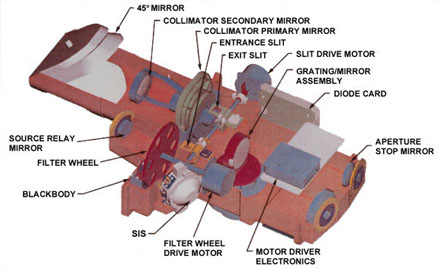The performance of the sensors and the on-board calibrators (the Solar Diffuser and its accompanying Solar Diffuser Stability Monitor, the Spectro-radiometric Calibration Assembly, the On-Board Calibrator Blackbody, and Space View port) have been very good. Several features of the performance lead to characteristics in the data set that merit special attention. Prominent instrument performance factors that complicated achieving optimum performance of the MODIS instrument are listed in the known issues section. For a description of these effects, the projected impact on the L1B and L2 science, the instrument characteristic causing the effect, and the current mitigation strategy, access the links in the known issues section. Areas of known concern with higher-level data products are described on the web at http://modis-atmos.gsfc.nasa.gov/reference_atbd.html for the atmosphere discipline and http://landweb.nascom.nasa.gov/cgi-bin/QA_WWW/newPage.cgi?fileName-Terr… for Terra land products.
MODIS On-Board Calibration Sources
MODIS has a full complement of On-Board Calibrators (OBCs) that generate various stimuli to provide radiometric, spectral and spatial calibration of the MODIS instrument. We identify the four OBCs as:
- Solar Diffuser "SD". Learn more at http://modis.gsfc.nasa.gov/about/soldiff.php
- Blackbody. Learn more at http://modis.gsfc.nasa.gov/about/blackbody.php
- Solar Diffuser Stability Monitor. Learn more at http://modis.gsfc.nasa.gov/about/sdsm.php
- Spectroradiometric Calibration Assembly. (SRCA, pictured below) Learn more at http://modis.gsfc.nasa.gov/about/srca.php
The BB is the prime calibration source for the thermal bands located from 3.5 µm to 14.4 µm, while the SD provides a diffuse, solar-illuminated calibration source or the visible, near infrared, and shortwave infrared bands (0.4 µm < = lambda < 2.2 µm). The SDSM tracks changes in the reflectance of the SD via reference to the sun so that potential instrument changes are not incorrectly attributed to changes in this calibration source. The SRCA is a very complex, multi-function calibration instrument that provides in-flight spectral, radiometric and spatial calibration.

MODIS External Calibration Sources
Two additional calibration techniques that MODIS uses are views of the moon and deep space. The advantage of "looking" at the moon is that it enables MODIS to view an object that is roughly the same brightness as the Earth. Like the on-board Solar Diffuser, the moon is illuminated by the sun; however, unlike the Solar Diffuser or the Earth, the moon is not expected to change over the lifetime of the MODIS mission. "Looking" at the moon provides a second method for tracking degradation of the Solar Diffuser. "Looking" at deep space provides a photon input signal of zero, which will be used as an additional point of reference for calibration. (Stars are too dim to be "seen" by MODIS.)

